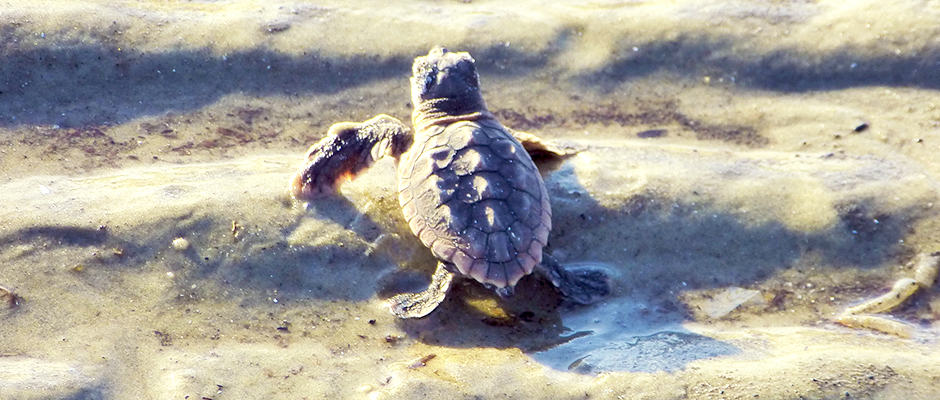Share this article
Rare sea turtles in Georgia recovering ahead of schedule
Sea turtles in Georgia have sailed past the state’s recovery goal of 2,800 nests, a conservation milestone the turtles weren’t expected to reach for another eight to 10 years, according to Mark Dodd, a senior wildlife biologist at the Georgia Department of Natural Resources. So far this year, biologists combing Georgia’s beaches have documented more than 3,000 nests made by loggerhead sea turtles (Caretta caretta), and they expect to find a few hundred more before the nesting season ends. Georgia’s goal of 2,800 nests is one of many criteria the species must meet before being delisted under the U.S. Endangered Species Act.
“This is an important milestone and suggests that all our management has paid off, and we’re moving in the right direction,” said Dodd.
Loggerhead sea turtles live in tropical and temperate oceans worldwide, and they struggle against threats such as fishing, predators, and a shortage of nesting beaches. The U.S. Fish and Wildlife Service considers them threatened or endangered throughout their range, and local teams from Texas to North Carolina are working toward a variety of recovery goals, including minimum numbers of nests and maximum numbers of dead turtles washing ashore. But there are no quick fixes.
“They’re not going to breed until they’re 30 or 35 years of age. So it takes a long time and a lot of work,” said Dodd.
These challenges haven’t dissuaded biologists in Georgia, who have been counting nests since the 1960s and conducting comprehensive surveys since 1989. While nest counts vary widely from year to year, the overall trend was a decline until the early 1990’s, followed by a gradual rise, says Dodd. Except for a brief drop in 2014, each year since 2010 has broken a new state record.
Biologists and managers used a variety of tactics to reverse the turtles’ decline. On the beach, they cut down on artificial light that disorients hatchlings, and they trapped predators such as raccoons and feral hogs. At sea, they introduced specialized nets for shrimp fishing, with openings that allow turtles to escape unharmed.
This year’s profusion of nests is a welcome sign that the management efforts are working. Still, says Dodd, there’s a long way to go before the turtles are out of danger.
“I think there will be a few parties,” he said. “And then it will be time to kind of put your head down, and start digging in the sand again.”
Header Image: A hatchling loggerhead sea turtle makes its way to the sea at Blackbeard Island, Georgia. ©USFWS/Becky Skiba








